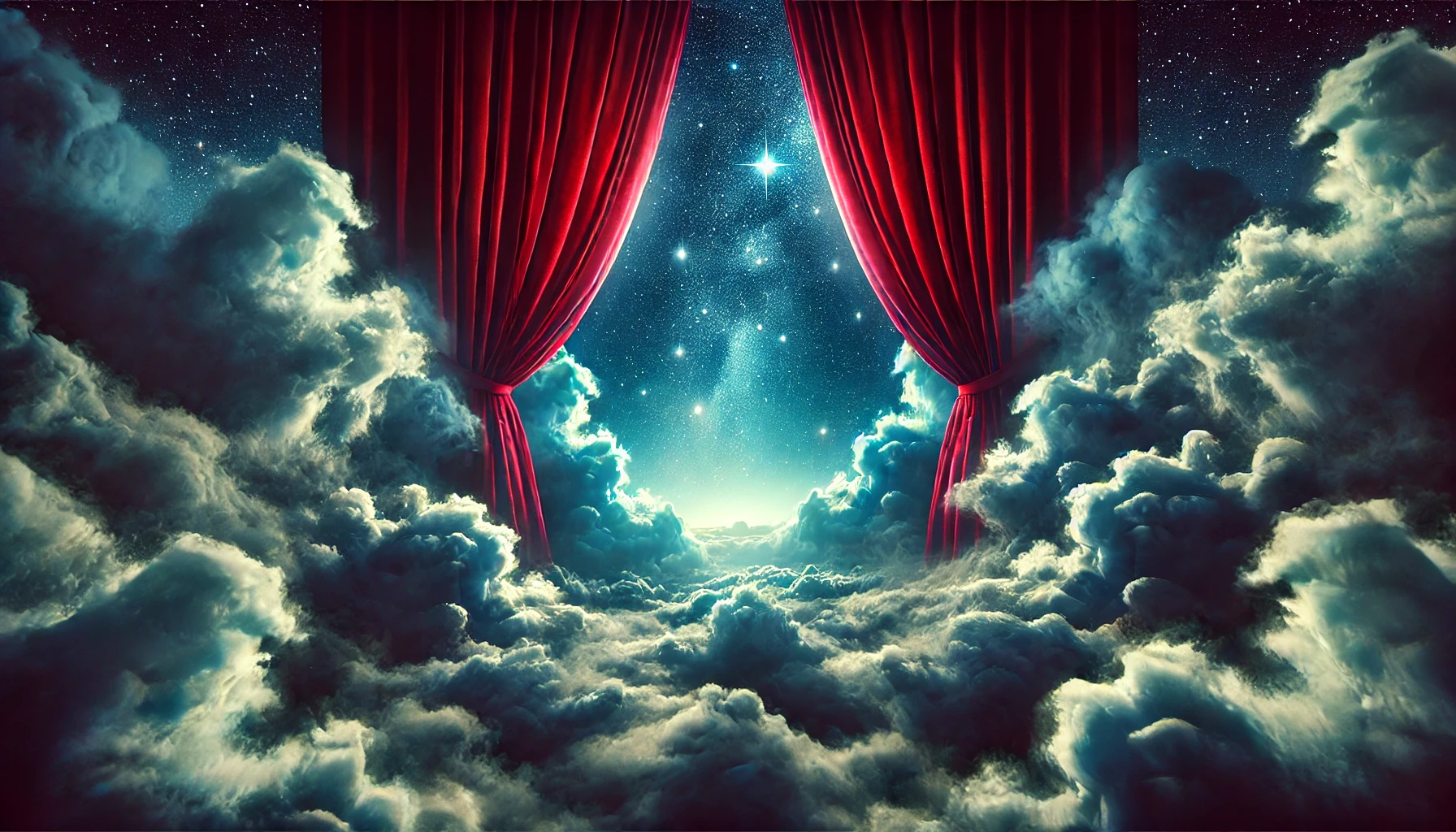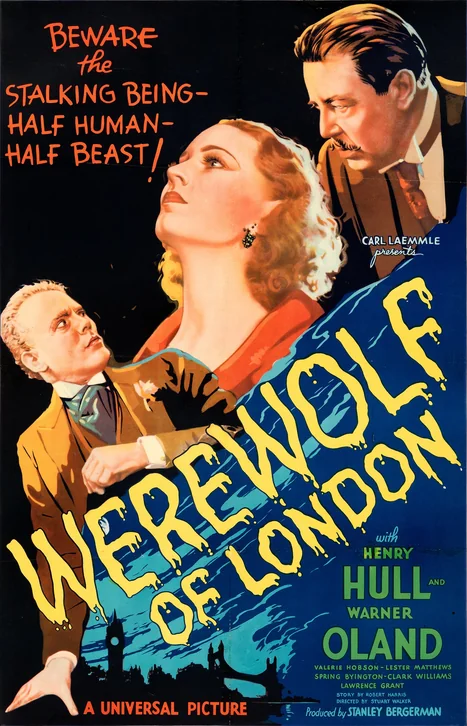🎯 Quick Overview
Trailer
- Director: Stuart Walker
- Genre: Horror, Fantasy, Drama
- Release year: 1935
- Runtime (length): 1h 15min
- IMDb rating: 6.3/10 (7.5K votes)
- Rotten Tomatoes: 86%
😅 Plot Summary – Badly Explained
A grumpy botanist accidentally becomes a werewolf after a bad trip to Tibet and then struggles to keep his rare glow-in-the-dark flower away from another lycanthrope, all while his wife flirts with an old flame because he’s too busy neglecting her for his plants.
🍿 Werewolf of London: Detailed Plot Synopsis
The Tibetan Expedition and a Fateful Bite
Dr. Wilfred Glendon, a renowned botanist, embarks on an expedition to the remote Himalayas in Tibet. His goal is to locate and collect the rare Mariphasa plant, a mysterious flower said to bloom only under moonlight. Despite ominous warnings from locals, Glendon presses on, driven by his scientific curiosity. As he finally nears the elusive bloom, he is ambushed and savagely attacked by a strange, wolf-like creature. Though he manages to fight off his assailant, Glendon sustains a deep, bleeding wound on his arm, unknowingly contracting a terrifying affliction.
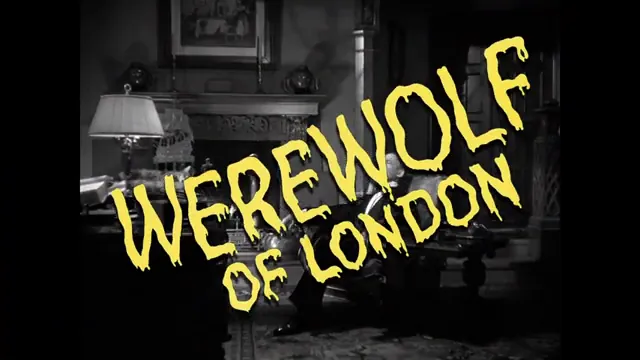
Return to London and the Onset of the Curse
Back in his London laboratory, Glendon becomes engrossed in cultivating the Mariphasa plant, hoping to unlock its secrets. His intense focus leads him to neglect his beautiful, younger wife, Lisa, who feels increasingly isolated. Soon, a mysterious stranger named Dr. Yogami, also from Tibet, arrives in London. Yogami exhibits an unusual interest in Glendon’s Mariphasa and cryptically warns him about the ancient curse of lycanthropy, revealing that the very creature that attacked Glendon was a werewolf. As the full moon approaches, Glendon begins to experience unsettling changes, realizing that Yogami’s warnings are horrifyingly true.
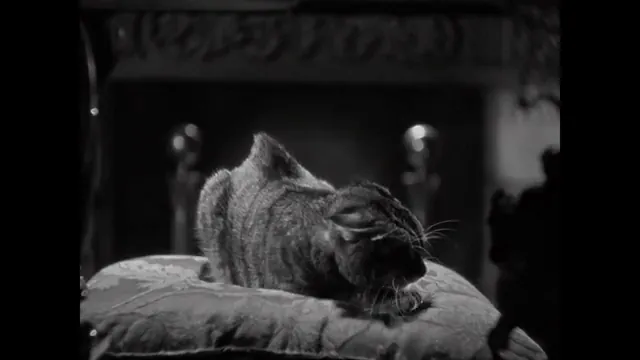
The Struggle for Control and the Mariphasa’s Promise
Under the influence of the full moon, Dr. Glendon transforms into a monstrous werewolf, prowling the gaslit streets of London and committing gruesome murders. Tormented by his dual nature, Glendon desperately seeks a cure. Dr. Yogami reveals that the Mariphasa flower, when its essence is applied, can temporarily suppress the transformation. Glendon attempts to cultivate the plant under artificial moonlight to ensure a constant supply of the antidote. However, his efforts are complicated by his escalating jealousy over his wife’s renewed connection with her old sweetheart, Paul Ames, and the unsettling discovery that his precious Mariphasa blossoms are being stolen.
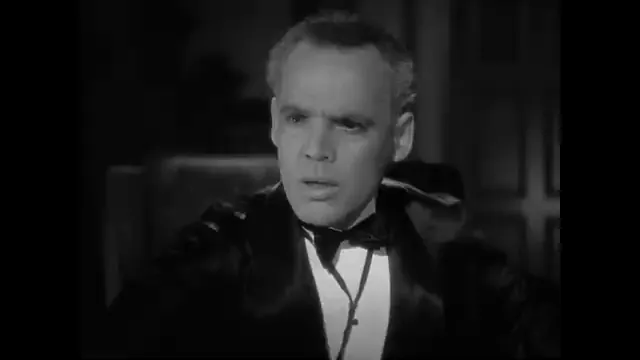
⚠️ Spoilers and Ending Explained
🎬 Cast & Characters
- Dr. Wilfred Glendon (Henry Hull): A brilliant botanist who becomes a tormented werewolf after being bitten in Tibet, desperately seeking a cure for his affliction.
- Dr. Yogami (Warner Oland): A mysterious Tibetan scientist who is also a werewolf and schemes to acquire the rare Mariphasa flower to prevent his own transformations.
- Lisa Glendon (Valerie Hobson): Dr. Glendon’s neglected wife who, feeling distant from her husband, rekindles an old romantic acquaintance.
- Paul Ames (Lester Matthews): Lisa Glendon’s charming former sweetheart whose renewed presence complicates her strained marriage to Dr. Glendon.
- Miss Ettie Coombes (Spring Byington): Lisa’s talkative and eccentric aunt who provides comedic relief and often finds herself entangled in the unfolding events.
💬 Memorable Quotes
- Dr. Yogami: “The werewolf is neither man nor wolf, but a Satanic creature with the worst qualities of both.” – Said by Dr. Yogami to Glendon, explaining the terrifying and corrupt nature of the lycanthropic affliction Glendon has acquired.
- Dr. Wilfred Glendon: “Singularly Single, madame. More single than I ever realised that it was possible for a human being to be.” – Spoken by Glendon to a socialite, reflecting his deep isolation and emotional detachment, especially as he grapples with his secret curse.
- Dr. Yogami: “The werewolf instinctively seeks to kill the thing it loves best.” – A chilling warning from Dr. Yogami to Glendon, revealing the tragic and perverse compulsion inherent in the werewolf’s nature.
- Dr. Wilfred Glendon: “Thank God!” – Glendon’s final words after being shot, expressing relief at being freed from the torment of his lycanthropic curse.
💰Box Office
- Budget: Estimated $195,393
- Domestic Gross: Unknown
- Worldwide Gross: Unknown
💥 Werewolf of London Reviews
Personal Review
Okay, so I finally watched ‘Werewolf of London,’ and honestly, I was pleasantly surprised! I always hear about ‘The Wolf Man,’ but this one is the unsung hero of Universal’s werewolf lore. I loved the vibe, how it blended science with the supernatural curse, and it genuinely made me feel for Dr. Glendon, even if he was a bit of a stick-in-the-mud. The transformation scenes were surprisingly creepy for a 1935 film—that subtle shift as he walks behind the columns? Genius! And Warner Oland as Dr. Yogami was just perfectly mysterious. It really makes you think about what it means to lose control, and the ending hit me harder than I expected. Definitely a must-see for classic horror fans; don’t skip it just because it’s not Lon Chaney Jr.!
- Who would enjoy:
- “Fans of classic Universal monster films”
- “Viewers interested in the history of horror cinema”
- “Those who enjoy atmospheric, suspenseful films over explicit gore”
- “Audiences looking for early werewolf mythology and portrayals”
- “Fans of psychological horror and tragic character studies”
- Content warnings ⚠:
- “Mild violence (mostly implied/off-screen murders)”
- “Themes of marital neglect and jealousy”
- “Psychological torment”
- “Classic horror suspense”
Professional Reviews
- Adapted: “”Werewolf of London” is an underrated gem from Universal’s horror collection, often overlooked due to its lack of a big-name monster star like Karloff or Lugosi. Henry Hull delivers a compelling performance as Dr. Glendon, portraying him with a tormented, Jekyll-and-Hyde-like intensity. The film cleverly blends classic werewolf lore with a scientific twist, creating a taut and suspenseful narrative. Jack Pierce’s makeup is subtly effective, showcasing the gradual transformation rather than overt beastliness. It’s a foundational horror piece that deserves more recognition.
- Adapted: “While overshadowed by its successor, ‘The Wolf Man,’ this film holds its own as a significant entry in the horror genre. The transformation sequences, especially Hull’s nuanced change behind pillars, are remarkably inventive for their time. The atmosphere is thick with shadows and fog, creating a chilling London setting. Though some find Hull’s character unsympathetic, his portrayal of a man unraveling under a horrific curse is quite strong. It’s a testament to early creature feature storytelling.
- Adapted: “Universal’s initial foray into lycanthropy is a fascinating watch. Henry Hull’s Dr. Glendon is a cold, self-absorbed protagonist whose personal struggles are surprisingly compelling, adding layers to his monstrous transformation. The film masterfully integrates humor through quirky characters like the bickering landladies, which, against expectations, complements the horror rather than detracting from it. It may not be as iconic as later werewolf films, but its intelligent script and strong production values make it a notable and enjoyable horror experience.
Audience Reactions
Viewers consistently praised the innovative transformation sequences and atmospheric sets.: Many enjoyed Henry Hull’s nuanced portrayal of the tormented Dr. Glendon, appreciating the film’s more intellectual and psychological approach to the werewolf myth. The balance of horror with unexpected comic relief also resonated positively with audiences.
The early special effects by Jack Pierce were frequently noted for their lasting impact and effectiveness.: Fans loved how the film established many core werewolf tropes while also presenting a unique narrative, particularly the concept of the Mariphasa flower as an antidote. The performances of the supporting cast, especially the quirky landladies, were a common source of entertainment.
Overall Consensus: Werewolf of London is considered an underrated classic, a pivotal early werewolf film that offers a compelling blend of horror, drama, and unexpected humor, despite sometimes being overshadowed by later Universal monster movies.
Awards
🛠️ Behind the Scenes
- “Werewolf of London is widely considered the first feature-length werewolf film, predating Universal’s more famous The Wolf Man (1941) by six years.”
- “Makeup artist Jack Pierce, renowned for his work on Frankenstein and The Mummy, initially designed a more extensive and hairy werewolf makeup for Henry Hull, but Hull found the application too time-consuming and requested a toned-down version.”
- “The exotic ‘Tibet’ scenes were filmed at Vasquez Rocks Natural Area Park in California, a distinctive geological formation often used in classic Hollywood productions, including episodes of Star Trek.”
- “Portions of the film’s musical score were reused in other Universal pictures, most notably the 1936 Flash Gordon serial, making its themes recognizable to fans of those films.”
🖥️ How to Watch Werewolf of London?
Werewolf of London (1935) is a classic horror film that can be found on various digital platforms. It is typically available for rent or purchase on services such as Prime Video, Apple TV, Google Play, and YouTube. Fans of classic Universal monster movies should check if it’s included with subscriptions to streaming services that feature vintage cinema, as it occasionally appears on such platforms.
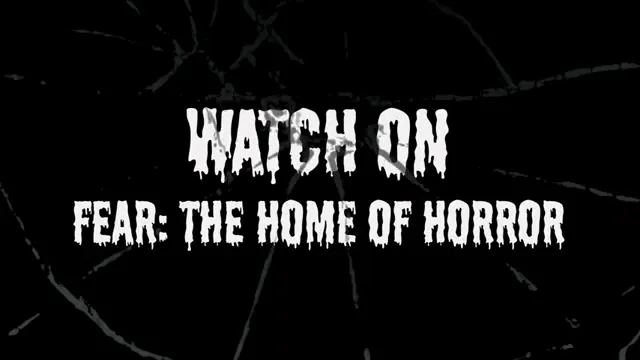
🎥 Similar Movies
If you enjoyed Werewolf of London, you might like these similar films:
- The Wolf Man (1941): Considered its more famous spiritual successor, this Universal classic established much of the enduring werewolf mythology and features Lon Chaney Jr.’s iconic portrayal.
- Dr. Jekyll and Mr. Hyde (1931): Explores the duality of man and beast, with a brilliant but tormented scientist battling an uncontrollable monstrous alter-ego, mirroring Glendon’s struggle.
- Frankenstein (1931): A foundational Universal horror classic from the same era, showcasing groundbreaking makeup effects and the tragic consequences of scientific ambition gone awry.
- An American Werewolf in London (1981): A modern classic that blends horror and dark humor, paying homage to classic werewolf films while updating the legend, with its title directly referencing this movie.
- The Curse of the Werewolf (1961): A visually striking Hammer Films production offering a more gothic and tragic portrayal of the werewolf legend, appealing to fans of classic horror from a different studio.
🛒 Werewolf of London Related Products
- Universal Classic Monsters: The Complete 30-Film Collection (Blu-ray): Experience the legacy with this comprehensive collection, including ‘Werewolf of London’ and other foundational horror films from Universal Pictures. Restored in stunning high definition.
- Werewolf of London (1935) Vintage Movie Poster Print: A high-quality reproduction of the original theatrical poster, featuring the eerie imagery and classic typography that advertised the film upon its initial release.
- Classic Horror Film Score Anthology (Vinyl): A curated vinyl collection of iconic scores from the golden age of horror, potentially featuring pieces that influenced or were directly used in ‘Werewolf of London,’ showcasing the atmospheric music that defined the era.
- The Wolf Man: Universal Monsters Graphic Novel: While focusing on ‘The Wolf Man,’ this graphic novel explores the broader themes of lycanthropy and tragic curses, offering a modern artistic interpretation of Universal’s classic monster mythology.
🎧 Soundtrack
Werewolf of London features a captivating soundtrack that enhances the movie’s atmosphere and emotional impact. Here are some notable tracks:
- “Main Theme / Incidental Music” – performed by Heinz Roemheld
- “Orchestral Selections (from The Invisible Man)” – performed by Various Artists
You can find the complete soundtrack on Amazon Music and Apple Music.
🤨 FAQ
Werewolf of London, released in 1935, is widely regarded as the first feature-length sound film to depict a werewolf transformation. While a lost silent short film titled “The Werewolf” (1913) predates it, “Werewolf of London” set many precedents for the cinematic werewolf, influencing later iconic films like Universal’s “The Wolf Man” (1941).
The main werewolf, Dr. Wilfred Glendon, is portrayed by acclaimed character actor Henry Hull. Notably, another werewolf in the film is Dr. Yogami, played by Warner Oland, best known for his role as Charlie Chan. Hull’s portrayal, while less iconic than Lon Chaney Jr.’s later take, showcases a tormented man grappling with a scientific affliction.
The Mariphasa flower is central to the plot as a rare Tibetan plant that blooms only under moonlight. Its juice is believed to be a temporary antidote for lycanthropy, capable of preventing the transformation from human to werewolf during the full moon. Both Dr. Glendon and Dr. Yogami desperately seek control of this flower for their own survival.
Released six years earlier, “Werewolf of London” laid crucial groundwork for “The Wolf Man.” While “The Wolf Man” starring Lon Chaney Jr. achieved greater iconic status and commercial success, “Werewolf of London” is praised for its scientific approach to lycanthropy, atmospheric visuals, and unique transformation sequences. It features Jack Pierce’s less hairy but still effective makeup. Fans often debate which film offers a more compelling portrayal of the cursed individual, with Hull’s Glendon being more distant and scientific compared to Chaney’s sympathetic Larry Talbot.
As a product of 1935, “Werewolf of London” relies on suspense, atmosphere, and psychological dread rather than graphic violence or gore. Murders are mostly implied or happen off-screen, and the transformation effects, while impressive for their time, are not overtly terrifying by today’s standards. It’s more of a classic suspense thriller with horror elements, making it suitable for viewers who appreciate vintage cinema’s approach to scares.
🔥 Bonus Content
What Makes a Great Werewolf?
Ever wondered what truly makes a classic movie monster tick? This video dives deep into the anatomy of a great werewolf, and it’s fascinating to see how *Werewolf of London* laid some of the foundational groundwork for the genre. I particularly loved how they break down the creature’s evolution in cinema!
✨ Rate
There are no reviews yet. Be the first one to write one.

